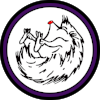Osteopathic Manipulative Treatment and the ear
/The human ear is an amazing structure. When it works well, you can hear a whisper across a room and spin on top of your toes. When it doesn’t work as well, then all kinds of things can happen. These range from ringing (tinnitus) and hearing loss to fluid behind the ear drums (which muffles sounds & can cause some dizziness) and infections to vertigo (the room won’t stop spinning). The ear can make a person’s life miserable.
Some of these conditions have treatments with medications, assistive devices, and surgery while some have no such mainstream treatments available. Another option does exist that may help with some of these conditions – Osteopathic Manipulative Treatment (OMT). Only one of the conditions listed has studies on it, but I will review other conditions that may also benefit from such treatment.
Let’s start with the big childhood condition of acute otitis media, or ear infections. Otitis media is defined as inflammation of the middle ear usually due to viral or bacterial infections. Several small studies have looked at this condition specifically in children who have had recurrent ear infections. In these studies they have shown that after a few treatments these children used fewer rounds of antibiotics. Also, when compared to routine care, these children required fewer surgeries. In the children that still required antibiotics or surgery, the children had less frequent episodes than before they were treated.
As mentioned, these are small studies so it is difficult to say this would work for all children who have recurrent ear infections. But if your child is looking at multiple rounds of antibiotics, other medications, and even possibly surgery, this could be an option.
Many of these children are put on antihistamines, decongestants, and steroids (oral or nasal) to try to keep fluid from staying behind the ear drums which is known as a persistent middle ear effusion. This fluid can lead to hearing loss, behavioral issues, and impaired language acquisition along with more ear infections. Another study looked just at the resolution of this fluid in children who had recurrent acute otitis media and did show improvement of fluid behind the ear drum after 3 weeks of treatments. Once again, a small study but still showed improvement.
As we grow our Eustachian tube (the tube that connects the nasal opening to the ear drum) grows and changes so adults tend to have fewer issues with acute otitis media as children. Eustachian tube dysfunction, or an inability of this tube to open correctly, causes fluid to stay in the canal. This fluid retention can lead to pain, decreased hearing, dizziness, tinnitus and infections. Treatments similar to those used for children with acute otitis media have been utilized for Eustachian tube dysfunction such as antihistamines, decongestants, steroids, antibiotics, and even surgery. No studies have been published on the utilization of OMT for this condition but if it works in children, it may help adults too.
Other conditions such as tinnitus not specifically related to Eustachian tube dysfunction and some forms of dizziness have improved with OMT but there are no studies out there to show this. Since the possible side effects of OMT are very low and the other option is to live with the problem bothering you or attempt to treat with medications that have side effects, why not try OMT?


